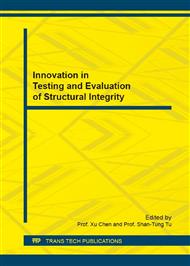p.493
p.498
p.503
p.508
p.514
p.519
p.524
p.529
p.534
Fitness for Purpose Assessment of Girth Weld Defect Based on In-Line Inspection
Abstract:
The girth weld defect is one of the most common types of defects on oil and gas pipelines, which can have a strong impact on the operation safety. Several girth weld failure accidents have occurred on PetroChina’s pipelines in recent years. In this paper, PetroChina’s current work on inspection and fitness for purpose assessment of girth weld defects is summarized. The in-line inspection has been proved to be the best practice for oil and gas pipeline defect inspection, but there are still some technical issues such as defect characterization and parameter selection. Fitness for purpose assessment methods for girth weld defects include strength assessment method based on plastic collapse, FAD method based on both plastic collapse and fracture, simplified factor method and numerical analysis method based on finite element. It is critical to identify the actual type of defects detected in in-line inspection to select an appropriate assessment method. The identification of various loads and the selection of appropriate material parameters are also important issues in assessment procedure. The key techniques to be developed include defect characterization, load identification, assessment of defects on high grade steel pipes, reliability-based assessment, etc.
Info:
Periodical:
Pages:
524-528
Citation:
Online since:
September 2016
Authors:
Price:
Сopyright:
© 2017 Trans Tech Publications Ltd. All Rights Reserved
Share:
Citation:


